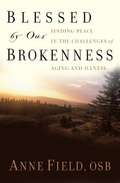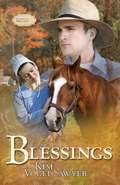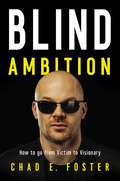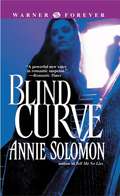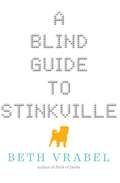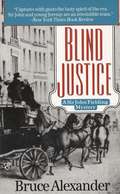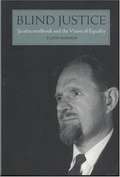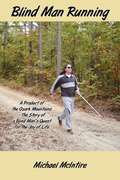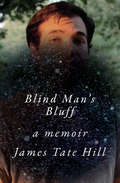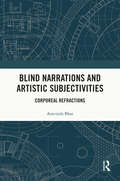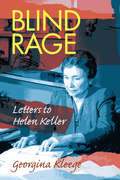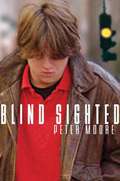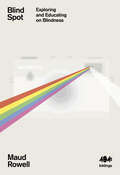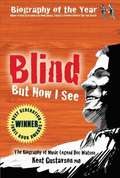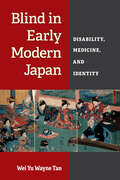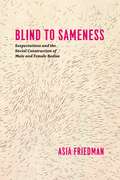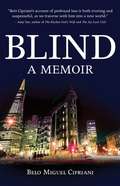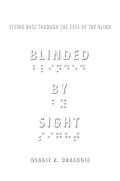- Table View
- List View
Blessed by Our Brokenness: Finding Peace in the Challenges of Aging and Illness
by Anne FieldWith compassion and hope, spiritual writer Sr. Anne Field helps us face the inevitable losses we experience through aging, illness, and other causes of suffering. She gently urges readers to choose freely to replace gloomy attitudes of self-pity with God's perspectives on pain and disabilities. In a reassuring way, she shows us how we can find peace and purpose in life by extending God's kingdom on earth through our losses, not in spite of them. With compassion and hope, spiritual writer, Sister Anne Field, helps us face the inevitable losses we experience through aging, illness, and other causes of suffering. She gently urges readers to choose freely to replace gloomy attitudes of self-pity with God's perspective on pain and disability. She shows us how we can find peace and purpose in life by extending God's kingdom on earth through our losses, not in spite of them.
Blessings (Sommerfeld Trilogy #3)
by Kim Vogel SawyerFor as long as she can remember, Trina Muller has had a special affinity with animals. When the local vet, Dr. Groening, recognizes Trina's passion and abilities, he assures her that she can take over his practice when she becomes a Doctor of Veterinary Medicine. But that's a career of which her parents heartily disapprove. Can God be so cruel as to give Trina the gift of healing without also giving her the avenue to use it? Graham Ortmann loves Trina, but when he finds out about her plans to attend college, he's outraged. How can he marry someone who is determined to step outside the dictates of the Old Order Mennonite fellowship? When a young man with a D.VM. in hand approaches Dr. Groening about purchasing his practice, Trina's dreams seem to be crumbling right in front of her. Is this a sign from God that she isn't meant to be a vet after all?
Blind Allies (Duncan Maclain Mystery #8)
by Baynard KendrickA gloomy New York mansion... a safe with a braille combination... an oil tycoon with a family sharper than a serpent’s tooth... these ingredients contribute to one of the most baffling cases of Duncan Maclain's career. The minute the man stepped into Captain Maclain's penthouse office, the blind Captain sensed he was a phony. His highly trained senses of touch, of smell, of hearing, told him that. To satisfy his own awakened curiosity, Maclain agreed to the man’s preposterous suggestion, and from then on things happened fast. This time Maclain is more dependent on Dreist , his deadly police dog, than Schnucke, his gentle Seeing-Eye companion.
Blind Ambition: How to Go from Victim to Visionary
by Chad E. FosterFor anyone seeking to live life to its fullest potential, Blind Ambition is an eye-opening account of a tech industry star executive who overcame fear and hopelessness to turn his disadvantage of blindness into a powerful competitive strength.While most people were preparing for the adventure of adult life, Chad E. Foster was watching the world he grew up with fade to black. But that didn&’t stop him from becoming the first blind person to graduate from the Harvard Business School leadership program and climbing the corporate ladder as a successful Finance/Sales executive. With determination, ambition, and drive, Chad created what Oracle said would be impossible. He gave millions of people the ability to earn a living by becoming the first to create customer relationship software for the visually impaired.In these pages, readers will: Be inspired by Chad&’s story of how he transformed the loss of his vision into a gift that provided him with unique strengths and abilities he did not have when he could see.See how we choose the stories we tell ourselves about our circumstances and how this either limits us or propels us towards our goals.Gain new perspective on what is possible when you shift your mindset, give up making excuses, and decide that you are in charge of who you want to be.Learn the mental model that Chad uses to quickly overcome frustrations and stressors.Chad is happier and more successful today than when he could see. Overcoming the challenges of blindness has improved his perspective, making him more resilient and grateful for the life that he has. Ultimately, Chad's unforgettable lessons and outlook will inspire readers to overcome their perceived limitations and explore new possibilities where they once may have only seen obstacles.
Blind Courage
by Bill Irwin Dave MccaslinBill Irwin, a confessed non hiker, and his German Shepherd Seeing eye dog Orient, through hike the 2000 mile plus Appalachian Trail. With the help of Orient, god, and many great friends he meets along the way, Bill tells of the trials, triumphs and adventures on the trail. From the time a bear slowed their progress, to the time he almost slid off a cliff to certain death. The book is filled with stories that will make you laugh, reflect, and maybe bring you to tears.
Blind Curve
by Annie SolomonAfter an on-the-job blow to the head, Detective Danny Sinofsky suffers a stroke, causing him to lose his sight. In the hospital, Danny lashes out at his mobility therapist Martha Coleman--who, it turns out, was the plain girl in high school ten years before, who had a crush on Danny. Original.
Blind Guide to Stinkville
by Beth VrabelBefore Stinkville, Alice didn’t think albinism--or the blindness that goes with it--was a big deal. Sure, she uses a magnifier to read books. And a cane keeps her from bruising her hips on tables. Putting on sunscreen and always wearing a hat are just part of life. But life has always been like this for Alice. Until Stinkville. For the first time in her life, Alice feels different--like she’s at a disadvantage. Back in her old neighborhood in Seattle, everyone knew Alice, and Alice knew her way around. In Stinkville, Alice finds herself floundering--she can’t even get to the library on her own. But when her parents start looking into schools for the blind, Alice takes a stand. She’s going to show them--and herself--that blindness is just a part of who she is, not all that she can be. To prove it, Alice enters the Stinkville Success Stories essay contest. No one, not even her new friend Kerica, believes she can scout out her new town’s stories and write the essay by herself. The funny thing is, as Alice confronts her own blindness, everyone else seems to see her for the first time. This is a stirring small-town story that explores many different issues--albinism, blindness, depression, dyslexia, growing old, and more--with a light touch and lots of heart. Beth Vrabel’s characters are complicated and messy, but they come together in a story about the strength of community and friendship.
Blind Justice (Sir John Fielding Mystery #1)
by Bruce AlexanderFalsely charged of theft in 1768 London, thirteen-year-old orphaned printer's apprentice Jeremy Proctor finds his only hope in the legendary blind magistrate, Sir John Fielding. Fielding, founder of the Bow Street Runners police force, then recruits young Jeremy in his mission to fight London's most wicked crimes.
Blind Justice: Jacobus ten-Broek and the Vision of Equality
by Floyd Matson<P>This is the long-awaited biography of Dr. Jacobus ten-Broek, legal scholar, UC Berkeley professor, and leader of the blind movement until his death in 1968. <P>Dr. Floyd Matson was a long-time collaborator with Dr. ten-Broek, authoring several books together, and perhaps the man who is most familiar with ten-Broek's work, and his life alive today. Dr. ten-Broek, pupil of Dr. Newel Perry, teacher at the California School for the Blind, was present at the creation of the National Federation of the Blind in 1940, and was its spiritual, intellectual, and political leader until ten-Broek's death in 1968. <P>This is a must-read for all those interested in the man at the center of a movement for over 30 years, whose legacy and inspiration is still felt today among blind activists around the world.
Blind Man Running: A Product of the Ozark Mountains - The Story of a Blind Man's Quest for the Joy of Life
by Michael McintireAutobiography of a blind man's journey through life as a traveling musician
Blind Man's Bluff!
by Geri TaeckensFrom CD jacket: Blind Man's Bluff is an autobiographical account of personal journey. Though the author travels under the cloud of impending tragedy, her struggle with pain and success are not unique. Spanning over four decades, her story begins in the 1950's, portraying the carefree days of youth. Unfortunately, her happy-go-lucky nature fades. An unexpected encounter and the treat of impending loss alter her view of the world. Believing the normal avenues for being accepted are disappearing, she is compelled to pretend she is someone she's not. Battling against an unknown darkness, she begins to slip in her fight to hold on to what she sees. To ease the pain, she follows a path of least resistance. Her thrill-seeking and addictions ultimately lead her to a dead-end road. Discover how the power of love pulls her from darkness and teaches her the beauty of individual differences. After all, we are not who we appear to be, but who we see ourselves to be.
Blind Man's Bluff: A Memoir
by James Tate HillA writer’s humorous and often-heartbreaking tale of losing his sight—and how he hid it from the world. <p><p> At age sixteen, James Tate Hill was diagnosed with Leber’s hereditary optic neuropathy, a condition that left him legally blind. When high-school friends stopped calling and a disability counselor advised him to aim for C’s in his classes, he tried to escape the stigma by pretending he could still see. In this unfailingly candid yet humorous memoir, Hill discloses the tricks he employed to pass for sighted, from displaying shelves of paperbacks he read on tape to arriving early on first dates so women would have to find him. He risked his life every time he crossed a street, doing his best to listen for approaching cars. A good memory and pop culture obsessions like Tom Cruise, Prince, and all things 1980s allowed him to steer conversations toward common experiences. <p><p> For fifteen years, Hill hid his blindness from friends, colleagues, and lovers, even convincing himself that if he stared long enough, his blurry peripheral vision would bring the world into focus. At thirty, faced with a stalled writing career, a crumbling marriage, and a growing fear of leaving his apartment, he began to wonder if there was a better way.
Blind Narrations and Artistic Subjectivities: Corporeal Refractions
by Aravinda BhatBlind Narrations and Artistic Subjectivities: Corporeal Refractions makes an important contribution to the field of blindness studies by highlighting the centrality of blindness in literary compositions. It presents a critical interpretation of selected prose writings by three blind authors: Argentine poet and essayist Jorge Luis Borges; Australian religious educator and diarist John M. Hull; and the American memoirist and poet Stephen Kuusisto. The volume discusses themes like theorizing the corporeality of writing aesthetic turn to the experience of blindness altered sensation and self-understanding lived experience of growing blind self-knowledge through interaction with the world artistic subjectivity, narrative choices, and the implied author This book will be useful for scholars and researchers of blindness studies, disability studies, arts and aesthetics, literature, cultural studies, and philosophy.
Blind Rage: Letters to Helen Keller
by Georgina KleegeThe author writes letters to the late Helen Keller to explore different aspects of her life.
Blind Side (Connor Westphal Mystery #5)
by Penny WarnerDEAD FROGS CAN'T JUMP On the eve of Calaveras County's annual frog-jumping contest, is the suspicious death of Buford, the county's prizewinning amphibian, sabotage or murder? Feisty local newspaper publisher Connor Westphal ponders the irony of this untimely tragedy-- made suddenly more alarming when poor Buford's handler, Dakota Webster, is found floating in Critter's Creek surrounded by dozens more dead frogs. Connor is more than curious when the frog of a rival competitor is discovered stuffed in the dead man's mouth, and worried when the prime suspect is Jeremiah "Miah" Mercer, one of her closest friends. Determined to clear Miah's name, Connor navigates a sordid mess of toxic waste, embezzlement, prescription drug scams and cold-blooded murder ... taking a dangerous leap of her own in a race to catch a killer.
Blind Sighted
by Peter MooreKirk, a creative misfit who is in trouble at high school because he is bored with his classes, learns to deal with his alcoholic mother, new friends, and life with the help of a blind young woman who hires him to read to her.
Blind Spot
by Maud RowellTwo million people in the UK live with sight loss, and many more worldwide. Yet the general population knows very little about the day-to-day life of the blind, who must move through a world not designed with them in mind, from city planning and technology, to pop culture and education. What’s more, blind people often fall off the pages of our history books, despite being some of the most prolific figures in their fields. <P><P> In Blind Spot, Maud Rowell challenges readers to think differently about what they may take for granted, carrying them on a whirlwind tour through time and space - from Japanese tube stations to the 18th century museum - to showcase what the world looks like for someone who does not see. She offers practical insights based on her own experiences, as well as spotlighting incredible blind pioneers - explorers, artists, scientists, and more - through history and the current day, unearthed through her own research and interviews. <P><P> In educating us about the realities of sight loss, Maud shows us how to be aware of our own blind spots, offering the knowledge needed to become better, more tolerant members of diverse communities. Society needs to support everyone - it's time we caught up.
Blind but Now I See: The Biography of Music Legend Doc Watson
by Kent Gustavson<P>From the day Doc Watson stepped off the bus in New York City, the North Carolina music legend changed the world forever. His influence has been recognised by presidents and by the heroes of modern music. This is the first comprehensive biography of Doc Watson, with never before released details about the American guitar icons life. <P>This book includes new interviews with popular musicians: Ben Harper, Michelle Shocked, Warren Haynes, Sam Bush, Bela Fleck, Tom Paxton, Maria Muldaur, John Cohen, Mike Seeger, Peggy Seeger, Abigail Washburn, Ketch Secor, Marty Stuart, Norman Blake, Tony Rice, Pat Donohue, Peter Rowan, Si Kahn, Tommy Emmanuel, Tony Trischka, Greg Brown, Guy Clark, Don Rigsby, David Grisman, Alice Gerrard, Alan O Bryant, Edgar Meyer, Guy Davis, Jack Lawrence, Tao Rodriguez-Seeger, Jean Ritchie, Jerry Douglas, Jonathan Byrd, Larry Long, Paddy Moloney, and many more. . .
Blind in Early Modern Japan: Disability, Medicine, and Identity (Corporealities: Discourses Of Disability)
by Wei Yu TanWhile the loss of sight—whether in early modern Japan or now—may be understood as a disability, blind people in the Tokugawa period (1600–1868) could thrive because of disability. The blind of the era were prominent across a wide range of professions, and through a strong guild structure were able to exert contractual monopolies over certain trades. Blind in Early Modern Japan illustrates the breadth and depth of those occupations, the power and respect that accrued to the guild members, and the lasting legacy of the Tokugawa guilds into the current moment. The book illustrates why disability must be assessed within a particular society’s social, political, and medical context, and also the importance of bringing medical history into conversation with cultural history. A Euro-American-centric disability studies perspective that focuses on disability and oppression, the author contends, risks overlooking the unique situation in a non-Western society like Japan in which disability was constructed to enhance blind people’s power. He explores what it meant to be blind in Japan at that time, and what it says about current frameworks for understanding disability.
Blind to Sameness: Sexpectations and the Social Construction of Male and Female Bodies
by Asia FriedmanWhat is the role of the senses in how we understand the world? Cognitive sociology has long addressed the way we perceive or imagine boundaries in our ordinary lives, but Asia Friedman pushes this question further still. How, she asks, did we come to blind ourselves to sex sameness? Drawing on more than sixty interviews with two decidedly different populations—the blind and the transgendered—Blind to Sameness answers provocative questions about the relationships between sex differences, biology, and visual perception. Both groups speak from unique perspectives that magnify the social construction of dominant visual conceptions of sex, allowing Friedman to examine the visual construction of the sexed body and highlighting the processes of social perception underlying our everyday experience of male and female bodies. The result is a notable contribution to the sociologies of gender, culture, and cognition that will revolutionize the way we think about sex.
Blind, Burned and Living Against All Odds
by Laura WestMaleka has suffered beyond belief and has many reasons to hate life, but she is the happiest person. Read this book and let her teach you how her blinded eyes see great things.
Blind: A Memoir
by Belo Miguel CiprianiThis memoir is based on the author's experience in losing his vision and learning to navigate the sighted-centric world.
BlindSight: Come and See
by Jane L. TolenoToleno's inspiring tale is filled with good humor and vividly describes living with blindness in an often short-sighted world. Toleno's inspiring tale is filled with good humor and vividly describes living with blindness in an often short-sighted world.
Blinded by Sight: Seeing Race Through the Eyes of the Blind
by Osagie K. Obasogie<P>Colorblindness has become an integral part of the national conversation on race in America. Given the assumptions behind this influential metaphor—that being blind to race will lead to racial equality—it's curious that, until now, we have not considered if or how the blind "see" race. Most sighted people assume that the answer is obvious: they don't, and are therefore incapable of racial bias—an example that the sighted community should presumably follow. <P>In Blinded by Sight,Osagie K. Obasogie shares a startling observation made during discussions with people from all walks of life who have been blind since birth: even the blind aren't colorblind—blind people understand race visually, just like everyone else. Ask a blind person what race is, and they will more than likely refer to visual cues such as skin color. Obasogie finds that, because blind people think about race visually, they orient their lives around these understandings in terms of who they are friends with, who they date, and much more. <P>In Blinded by Sight, Obasogie argues that rather than being visually obvious, both blind and sighted people are socialized to see race in particular ways, even to a point where blind people "see" race. So what does this mean for how we live and the laws that govern our society? Obasogie delves into these questions and uncovers how color blindness in law, public policy, and culture will not lead us to any imagined racial utopia.
Blindness
by Henry GreenBlinded in an accident on his way home from boarding school, John Haye must reevaluate his life and the possibilities for his future. His stepmother--worried that, blind and dependent, he'll spend his life with her--wants to marry him off to anyone who will take him, provided she's of the "right" social class. Contrary to her hopes, John falls in love with the daughter of the town drunk (who is also the town parson). She whisks John off to London, where in this strange city he is confined to a room above a major thoroughfare while she gets on with her life. Blindness was first published when Henry Green was an undergraduate at Oxford. Highly praised as a master of high-modernism, Green went on to write eight other novels, including Concluding and Doting.
